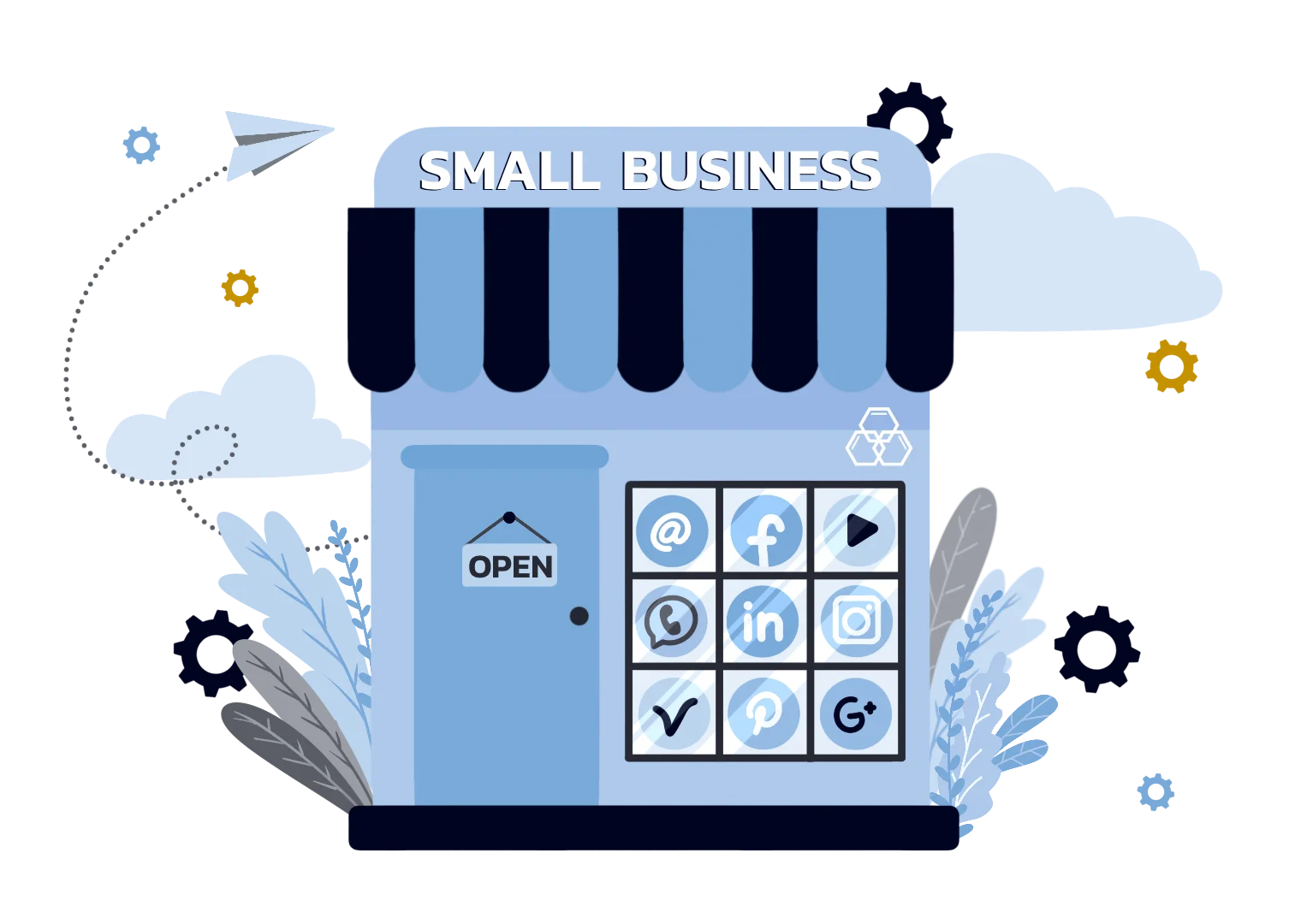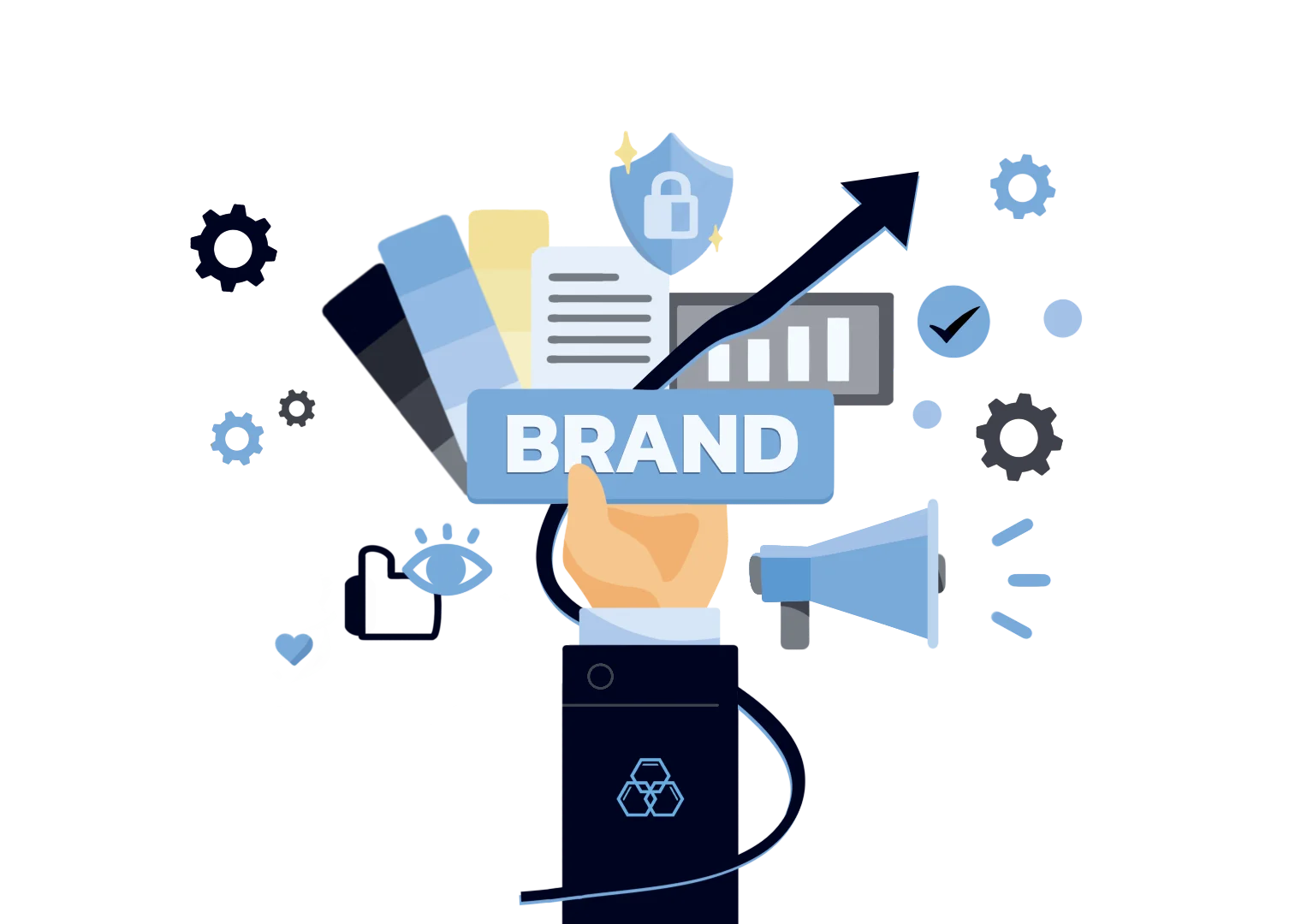We've discussed the consumer market and the marketing campaign strategies. We talked about the effective practices marketers use to ensure that consumers will see the product, but this is just half the battle. You want to make sure that people can recognize your product at first glance when they see the brand again and make its name pass along to their peers. This is what consumer branding does.
But consumer branding isn't made- just like any other branding type - it's developed. It comes up the moment your company connects to your target audience for the first time, and we want to make sure that the perceived brand must align with the company's core values and mission statement.
To set expectations, brand building is challenging. Not only do we have to develop a positive image, but to dedicate time and effort to maintain it.
So what is a consumer brand, and how can one build a consumer brand effectively?
Consumer Brand: What is it?
A consumer is a customer of a product or service that buys them directly from the company for their personal use. A consumer brand is a type of branding that focuses on the closer connection between the product and the individual consumers and sets a unique perception that separates the company from its competitors.
Consumer branding is more than just setting a logo and a name; it represents the perception, reputation, and overall impression of a product and the company in the public's minds.
A consumer brand is often characterized by its focus on:
1. Differentiating by addressing customer pain points.
2. Building a unique visual identity that can be recognized at first glance.
3. Appeal to human emotions through storytelling and advocacy.
4. Maintaining an overall positive customer experience with the product.

Consumer Brand: Difference between Other Brands
Many aspects of a corporate organization can be branded and serve different purposes.
Branding can also depend on the type of audience. B2B branding is a set of strategies that targets other companies as clients. A corporate brand focuses on increasing the company's value for investors and stakeholders. The employer brand is for top talent in the industry. Service branding focuses on promoting its namesake, just like consumer branding.
B2B branding may have similar focuses to consumer brand in regards to close connection with their target customers (in fact, all branding types do), consumer branding's common approach on emotional appeal and being relatable with their target audience, in comparison to B2B branding which mainly focused on rational and functional benefits that can help businesses achieve their objectives.
Consumer Branding Examples

Domino's Pizza
Pizza restaurants, and chain restaurants in general, often cast a wide net on their target market, and the typical brand personality and voice that works to as many people as possible is to be humorous and trendy.
Domino's social media channels like Twitter and Tiktok post memes, sketches, and videos surrounding pizza culture, aiming for virality on these digital platforms.
Key Takeaway:
People are more receptive nowadays to corporations willing to connect with their target audience through engagement, even though the bottom line is for marketing. Having a consumer brand marketing team that is updated on the trends and understands what it takes to be viral contributes significantly to their brand recognition.

Wendy's
Like Domino's, Wendy's brand, specifically on Twitter, approaches its marketing tactics by building a personified brand that exudes humor, sarcasm, and wit. Checking their Twitter page will look the same as with Dominos, but in each of their posts, most of their comments always have a reply from Wendy.
Key Takeaways:
It is essential to be actively engaging with your audience. Having a social media expert who can keep up with social media interaction will help you run your digital channels effectively. Moreover, having a sarcastic and witty brand personality also enables you to interact with negative responses, as replying to one keeps your engaging while keeping in character.

Dove
This soap brand is often the go-to example when someone asks, 'Name a successful marketing strategy.' Their marketing campaigns have the hallmarks of how advocating for social causes benefits the company's brand image. Their branding messaging often emphasizes self-love, empowerment, and challenging beauty standards, which appeals to more younger generations of women. And to be true to their cause, they present their loyal customers or non-celebrities for their video ads, campaigns, and social media posts.
Key Takeaways:
The consumer marketing strategy that puts social advocacy on the front can connect more closely with their target audience, which is Dove to 18-35 years old women who value their natural beauty. It is expected that deeper research is involved in making their campaigns, as it would be crucial to ensure it will be understood, which could potentially cause irreversible damage to the brand's reputation.
However, more people are becoming more skeptical of a company’s social cause, as it is expected that their main goal is to make a profit, which is why it is necessary first that the company's core values must genuinely commit to their social cause, and must show support to organizations and communities that address concerns to gender, race, and other political issues.
Another issue that marketing teams should expect when their campaigns advocate social causes is to prepare for backlashes, especially those who disagree with the advocacy. This could narrow down the potential target market unless those customer segments are the anti-persona of the company.
Tips for Building Customer Branding
You can get inspiration on your consumer brand strategy by looking at brands we've presented and more. There isn't a consistent holistic strategy that works in every situation, and we recommend that you work with an expert who understands the ins and outs of brand-building.
But there is merit when doing it yourself, so here are some strategies that you can try out:

Identify Your Target Audience
Effective brand strategies always starts with good research; knowing your target audience should be a no-brainer. Doing so allows you to:
1. Create an ideal buyer persona and refine the branding strategy that appeals to you the most.
2. Focusing on a specific target audience of defined demographics makes it easier for your to foster brand loyalty
3. You can save operation costs as your campaigns are more focused, narrower, and have a faster ROI.
Create Opportunities From Customer Pain Points
One way to pinpoint your target audience is to identify what needs in a particular product you want to address. There are many aspects of a product that you can get opportunities from, and some of the common pain points are as follows:
1. Price - customers looking for consumer products often consider price in their purchasing decisions.
2. Premium - you can get opportunities to cater to customers who prefer premium products for a premium price.
3. Social Advocacy - most consumers are more willing to associate with a brand that supports the same social causes that they do.
4. Accessibility - you can take advantage of your location as your selling point, especially since your products are often sought after by people who want to get them as soon as possible.
5. Purchasing Process - simpler and more straightforward purchasing process is an often overlooked pain point that caters to customers who don't want things to be unnecessarily complicated.

Create a Unique Brand Identity
Brand identity can be built by many aspects of a consumer brand; here are some:
1. Logo - as a cornerstone of your brand identity, your logo must culminate your core value proposition, brand purpose, and personality. It must be clear, timeless, and visually appealing.
2. Typography - just like your logo, your font choice must reflect your brand as a whole.
3. Color Palettes - there is value in understanding color theory to choose your own palette, but you should also consider using colors that make you stand out from your competitors
4. Email Design - emails are one of the first contacts you make with your customers, and you must ensure that you impress your audience at first glance.
5. Packaging - having visually appealing product packaging increases the perceived value of your product and is a valid selling point, especially if you're opting for environmentally friendly materials for your packaging.

Build a Community
More and more consumer brands give value to the community they create around their products or services. Effective marketing communications gives you the following:
1. Word-of-mouth marketing - the audience trusts their peers more about the product's quality than your advertising. Leveraging social proof in your marketing campaigns through community engagement reduces your marketing costs, as your customers are much more willing to endorse your product to their own satisfaction.
2. Market Research and Feedback - your community is a valuable asset whenever you conduct research for your product development. Moreover, receiving feedback from your audience allows you to assess your operations and campaigns to see which works and which doesn't. The audience knowing that you listen to them and act accordingly increases your brand authenticity, credibility, and authority.
3. Brand Loyalty and Customer Retention - Actively engaging with your audience and properly addressing their concerns and pain points increases repeat purchases as people know that your brand can be trusted based on their positive experience.
Digital Marketing is one good example, as exemplified by the mentioned brands, to build your community. Here are some things you can do on your social media channels:
1. Create posts that indirectly connect to your product. You don't have to sell, you just need to give a reminder that your product exists.
2. Give a reply to your audience. Be witty about it.
3. Take feedback to heart and encourage your audience to do so.
4. Aim for virality and keep up with the trend.
5. Create videos that encourage engagement through humor, curiosity, or uniqueness.

Remember that choosing the right platform is also essential in your community building online, specifically in finding where your target audience usually goes. For example, older generations often use Facebook as opposed to the younger generations, who use TikTok more often.
Final Thoughts
Unlock the true potential of your consumer brand with Evolv - the catalyst for captivating success. Let our expert team of brand builders unleash the power of emotional connections, driving unprecedented growth and enduring loyalty. From global giants like BIC to trailblazing newcomers, we have the experience to elevate corporate brands to new heights. Don't settle for the ordinary; embrace the extraordinary with Evolv. Your brand's evolution awaits!







